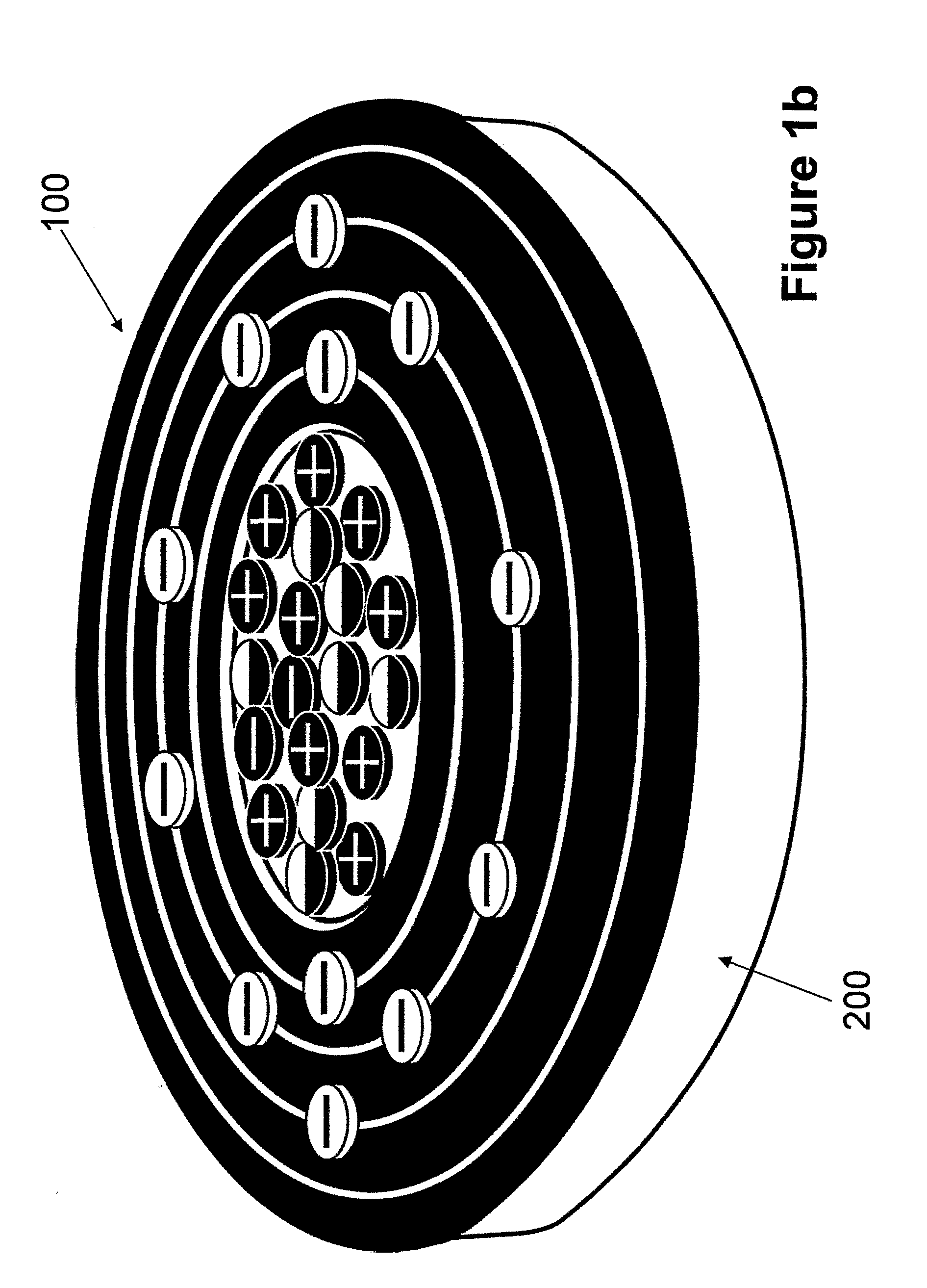Interactive atomic model
a technology of atomic models and atomic structures, applied in the field of interactive atomic models, can solve the problems of difficult to really understand the way atoms look, difficult to understand the big picture within chemical education without, and the kind of education is actually impossible to benefit from for persons with some kind of dysfunction
- Summary
- Abstract
- Description
- Claims
- Application Information
AI Technical Summary
Benefits of technology
Problems solved by technology
Method used
Image
Examples
Embodiment Construction
[0016]One embodiment of the invention is schematically illustrated on the attached drawings where FIGS. 1a and 1b illustrate how the elementary particles 301, 302, 303 can be positioned on the elevations 102 that represent the electron shells, and FIG. 2 illustrates the interactive atomic model when it is not in use and the elementary particles 301, 302, 303 are stored in the compartment 201 of the container 200. FIG. 3 illustrates the additional set of electron shells that are provided on the bottom side 202 of the container 200.
[0017]The invention according to FIG. 1 and FIG. 2 provides a container 200 with a lid 100, where the upper side 101 of the lid houses electron shells 102, and a depressed circular space 103 in the centre. Said depressed circular space 103 represents the atomic nucleus. The elementary particles are stored in the container 200; protons 302, electrons 301, and neutrons 303. The elementary particles are placed in said depressed circular space 103 or on the ele...
PUM
 Login to View More
Login to View More Abstract
Description
Claims
Application Information
 Login to View More
Login to View More - R&D
- Intellectual Property
- Life Sciences
- Materials
- Tech Scout
- Unparalleled Data Quality
- Higher Quality Content
- 60% Fewer Hallucinations
Browse by: Latest US Patents, China's latest patents, Technical Efficacy Thesaurus, Application Domain, Technology Topic, Popular Technical Reports.
© 2025 PatSnap. All rights reserved.Legal|Privacy policy|Modern Slavery Act Transparency Statement|Sitemap|About US| Contact US: help@patsnap.com



